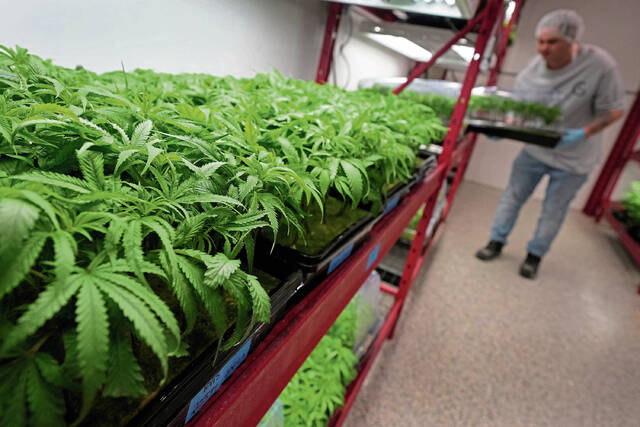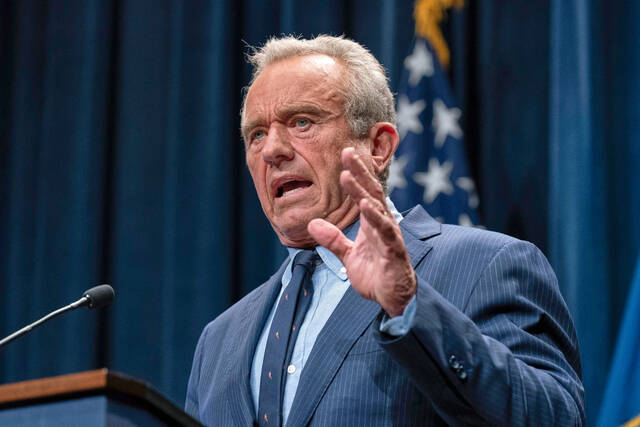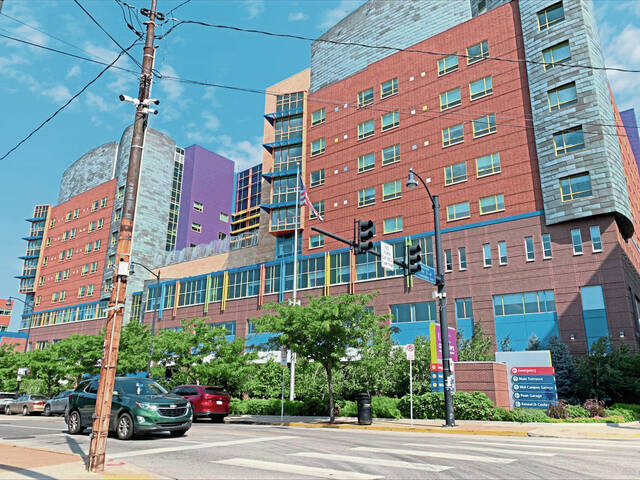UPMC took in $11.1 billion in revenue in the first half of 2020 — nearly $1 billion more than the same time period last year — despite grappling with hospital losses during the pandemic-spurred lockdown, the nonprofit health system reported Wednesday.
By July, as patient volume picked up following a statewide ban on non-urgent care in March and April, operating revenue was up by about 10% from the $10.19 billion made by July 2019, midyear financial records released by UPMC show.
“We’re positioned with an organization of great financial strength to deal with what comes at us,” UPMC Interim Chief Financial Officer Ed Karlovich said during a news conference held at UPMC’s sports medicine clinic at Lemieux Sports Complex in Cranberry. “During these first six months, we were able to not only treat the covid patients, but also maintain and treat the others in the community as well.”
UPMC offset losses on its hospital provider side with gains from its insurance business — and more than $1 billion in federal aid via grants and cash advance payments from coronavirus relief packages passed by Congress. Karlovich pointed to “the fact that we are an integrated delivery financing system, as well as the federal aid that was provided to us by the federal government really (helped) to maintain services that we wanted to maintain during this very difficult time.”
“The federal government acted decisively and put funding into the system,” Karlovich said, “and I think it has been well-utilized across this community.”
More than 400,000 new members have enrolled in UPMC insurance plans since the same time last year, including 100,000 members added between April and July, records show.
UPMC’s investment portfolio takes $423M hit
UPMC as a whole still reported a loss of $165 million in net income, or revenue after deducting expenses, the unaudited records show. That’s compared to a net income gain of $372 million by the same time last year.
Karlovich attributed most of the losses to investments.
UPMC took a 4% hit to its portfolio, with its investment activities losing $423 million between January and July, records show. That’s compared to a gain of $278.8 million on investments by midyear 2019. Those losses aren’t overly concerning to executives, with the stock market already climbing again.
“We’re in the markets for the long haul,” Karlovich said.
During the first half of this year, UPMC’s outpatient revenue was down by 4%, admissions and observations fell by 13% and physician revenue dropped by 14%.
More recently, however, patient activity has returned to near pre-pandemic levels across the system — with the exception of emergency department visits, said Leslie Davis, senior vice president and chief operating officer of UPMC’s Health Services Division.
“Some of the ED (emergency department) volume that has not come may never come back — and that may not be such a bad thing,” said Davis, referring to the goal of getting more patients treated by primary care doctors and receiving preventive care.
Expansion projects continue across Western Pa.
The pandemic has not deterred progress on major expansion and construction projects, including a $3.7 million expansion at UPMC Mario Lemieux Sports Complex along Interstate 79.
In November, a Magee-Womens Specialty Services Center will open at the Cranberry facility, equipping it with specialized doctors and new equipment for early cancer diagnosis, breast cancer surgery, midwifery and obstetrics and gynecology care.
Last month, UPMC Children’s Express Care opened at the Lemieux Center to provide after-hours care of minor injuries and illnesses by board-certified pediatricians on nights and weekends, as a cheaper and more specialized alternative to urgent care. The center is available to children with any insurance type — including rival Highmark’s narrow network insurance plans. Nearly 200 children have used the services so far.
The additions are part of UPMC’s efforts to continue to grow its reach in the North Hills, where executives say UPMC already claims a 65% market share.
The system reported providing a total of $1.4 billion in community benefits in 2019, including $479 million in charity care, $376 million in charitable contributions and community health programs and $548 million spent on medical research and education.








